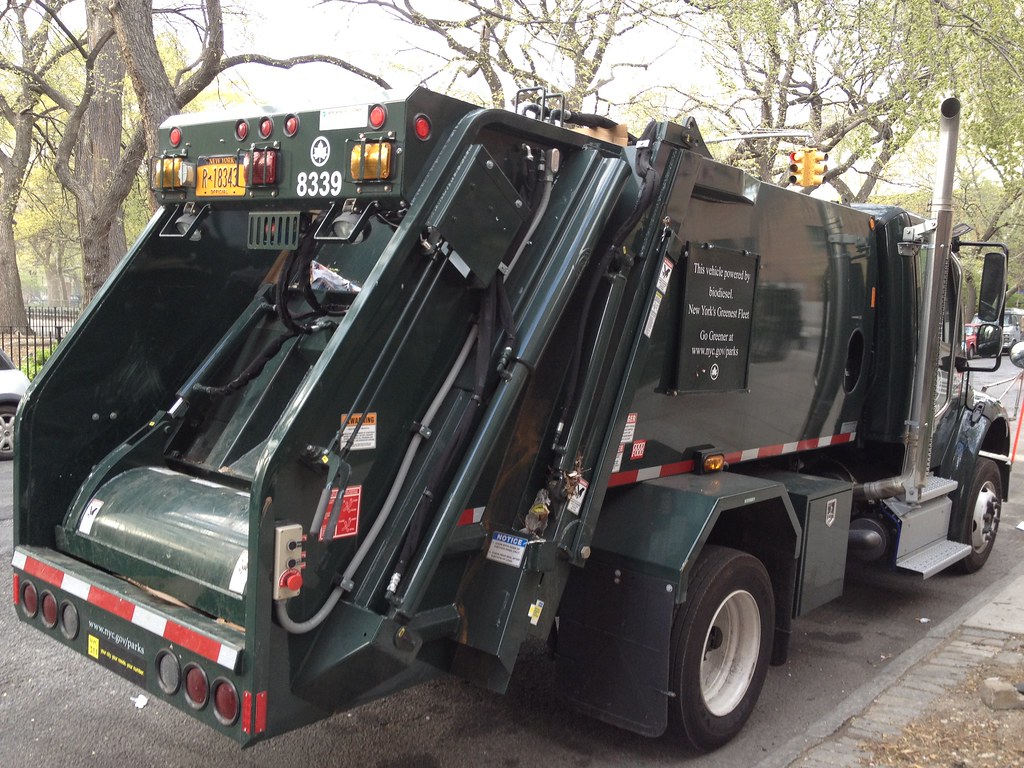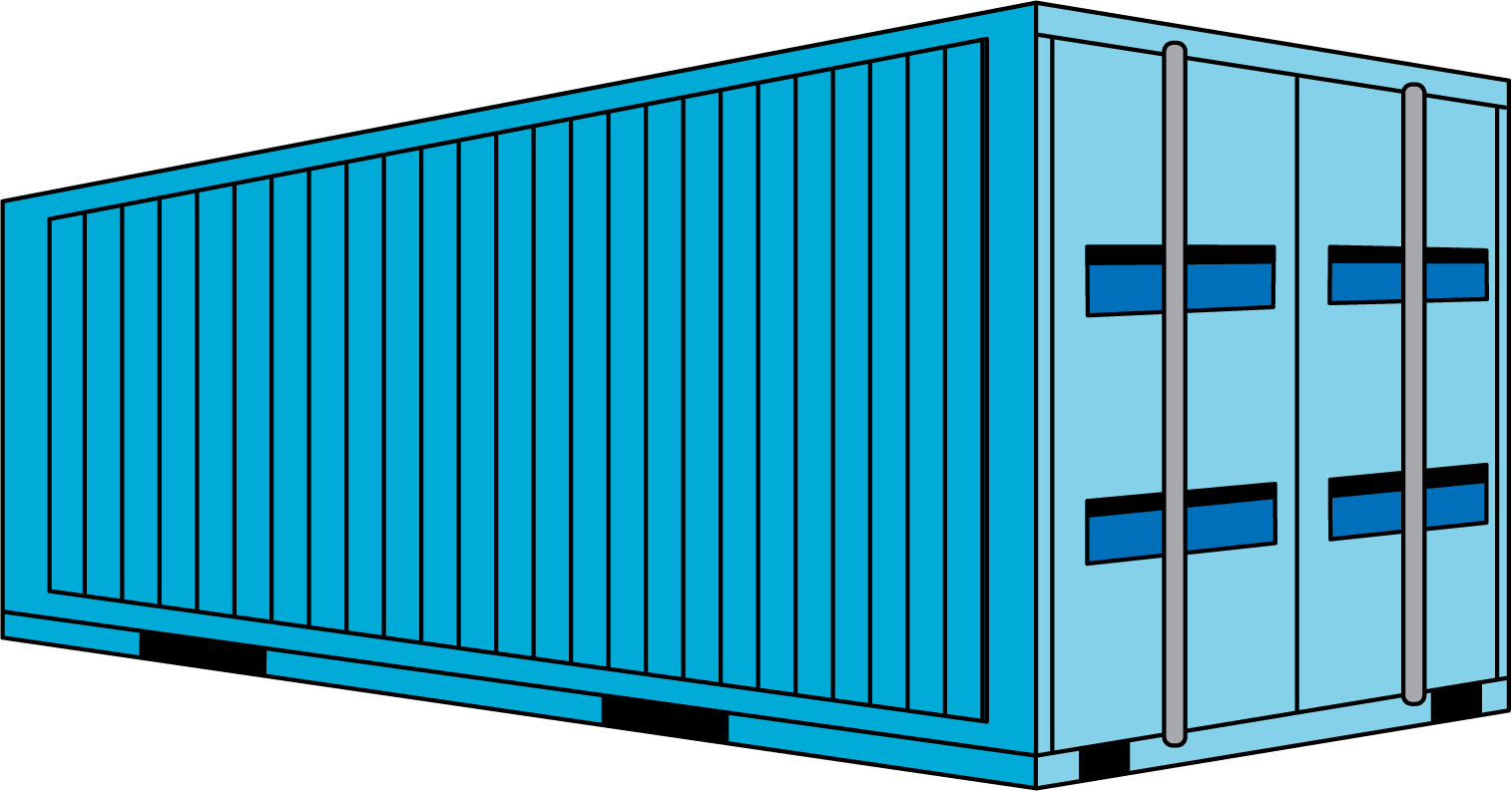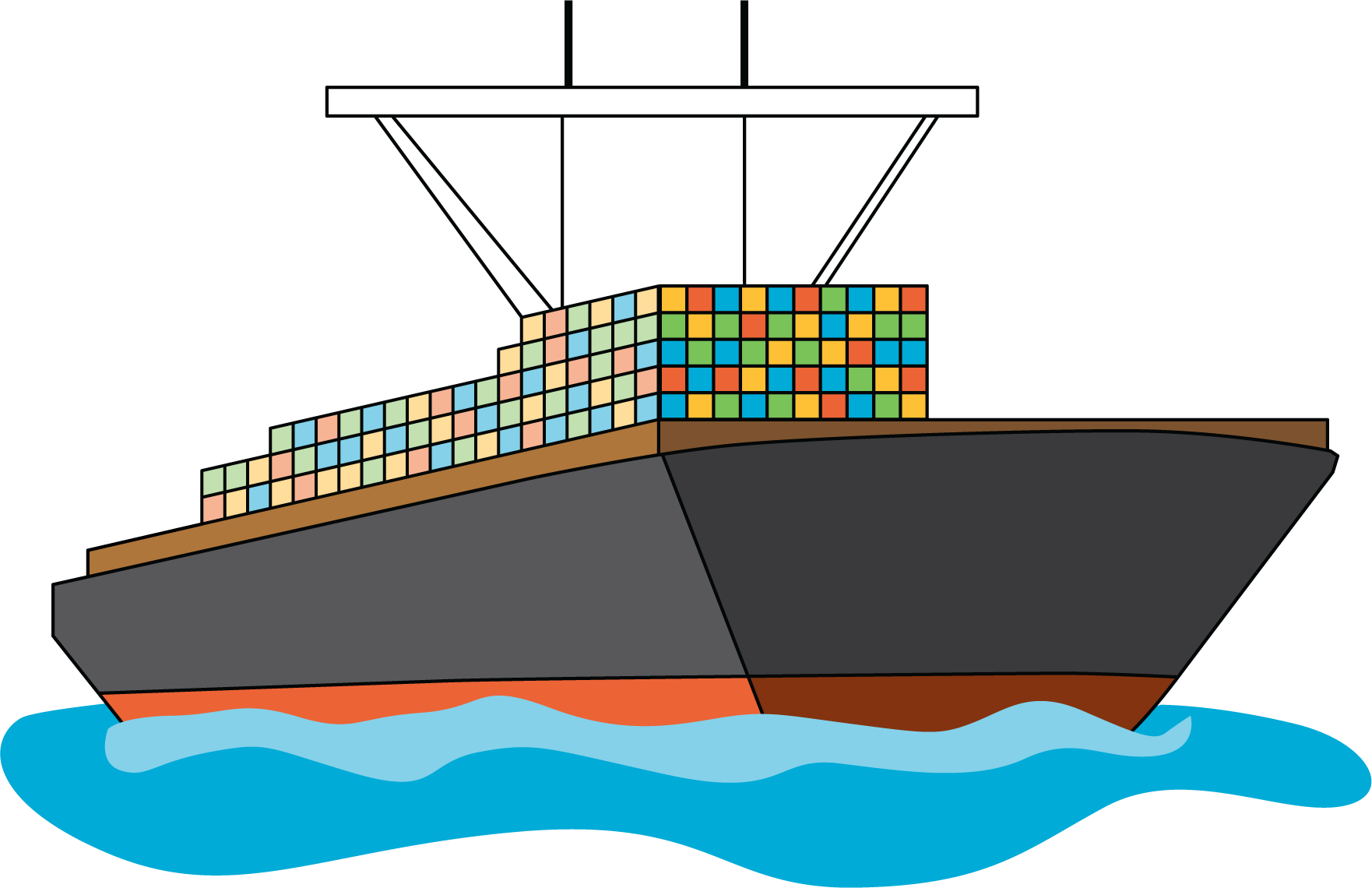Lesson 12
Lots and Lots of Garbage (optional)
Warm-up: Notice and Wonder: Garbage Truck (10 minutes)
Narrative
The purpose of this warm-up is to for students to discuss how much space a ton of garbage takes up, which will be useful when students consider 3,300 tons of plastic trash in shipping containers in a later activity. Some students may not know the precise definition of a ton. Encourage students to visualize what 2,000 pounds of trash might look like. The synthesis gives students an opportunity to consider the kind and the amount of trash produced in their community.
Launch
- Groups of 2
- Display the image.
- “What do you notice? What do you wonder?”
- 1 minute: quiet think time
Activity
- “Discuss your thinking with your partner.”
- 1 minute: partner discussion
- Share and record responses.
Student Facing
What do you notice? What do you wonder?

Student Response
For access, consult one of our IM Certified Partners.
Activity Synthesis
- “The average garbage truck can hold 12–14 tons of garbage.”
- If needed, “1 ton is the same as 2,000 pounds.”
- “If this truck collects trash only from our school (or neighborhood) what kinds of things might the truck be filled with?”
- “How long do you think it would take our school (or neighborhood ) to completely fill the truck?”
Activity 1: 60 Containers (25 minutes)
Narrative
In this activity students find different ways to arrange 60 shipping containers. They decide which arrangement is the best in the context of shipping 3,300 tons of garbage.
Advances: Representing, Conversing
Supports accessibility for: Attention, Organization
Required Materials
Materials to Gather
Required Preparation
- Each group of 2 needs at least 20 connecting cubes.
Launch
- Groups of 2 or 4
- “Here is a short paragraph from a newspaper article from 2018.”
- Display “Malaysia plans to send back roughly 3,300 tons of plastic trash to countries like the U.S. and Canada.”
- “What are some questions you have after reading this?” (Where is Malaysia? Why is Malaysia sending it back? Why are countries sending their trash to places like Malaysia? Where else does our trash go?)
- If needed, show students Malaysia on a map.
- “The trash fits in 60 shipping containers and will be returned in a large cargo ship over water.”
- “What does a shipping container look like?”
- Display image of a shipping container.

- Give access to connecting cubes, poster paper, patty paper, and writing tools to each group.
Activity
- 1 minute: independent work time.
- 15 minutes: partner work time
- As students work, monitor for students who use different arrangements.
Student Facing
- Find at least 5 different ways to arrange 60 containers. Represent each arrangement with an expression.

- Create a visual display to show which is the best arrangement for shipping the 3,300 tons of garbage.
Student Response
For access, consult one of our IM Certified Partners.
Activity Synthesis
- Invite previously selected students to share their visual display.
- “What arrangement does this group’s visual display represent? Why might they think this is the best arrangement?”
- “What can you tell this group that may make them change their decision?” (It’s too tall and might start falling in the water. It’s too wide and might not fit. It’s too wide and might not leave room for anything else.)
- Consider asking “How much trash do you think is in each of the containers?” (Students can estimate or make an educated guess.)
Activity 2: How Many Containers on the Ship? (20 minutes)
Narrative
The purpose of this activity is for students to estimate the number of shipping containers on a fully loaded cargo ship. Then they make many assumptions about the arrangement of the containers on the boat to come up with a better estimate.
Launch
- Groups of 2
- Display image.
- “How many containers are on the cargo ship?”
- “What is an estimate that’s too high?” “Too low?” “About right?”
- 1 minute: quiet think time
- Record responses.
Activity
- “A cargo ship can hold many more than 60 containers. The second image is a picture of a cargo ship that is fully loaded.“
- 5 minutes: independent work time
- “Discuss your estimates and assumptions with your partner.”
- 2 minutes: partner discussion
- Monitor for students who are making different assumptions:
- The ship is fully loaded.
- Some of the space is taken up with structures.
- There are more containers below deck that we can’t see.
- All containers are the same size.
- the specific side lengths of the shipping containers
Student Facing
-
How many containers are on the cargo ship?

Record an estimate that is:
too low about right too high \(\phantom{\hspace{2.2cm} \\ \hspace{2.2cm}}\) \(\phantom{\hspace{2.2cm} \\ \hspace{2.2cm}}\) \(\phantom{\hspace{2.2cm} \\ \hspace{2.2cm}}\) -
How many containers are on the cargo ship?

Record an estimate that is:
too low about right too high \(\phantom{\hspace{2.2cm} \\ \hspace{2.2cm}}\) \(\phantom{\hspace{2.2cm} \\ \hspace{2.2cm}}\) \(\phantom{\hspace{2.2cm} \\ \hspace{2.2cm}}\) -
What assumptions were you making when you came up with your estimates?
Student Response
For access, consult one of our IM Certified Partners.
Activity Synthesis
- Invite students to share their estimates and any assumptions they made.
- “How could you improve your estimate?” (Recreate the ship using a model. Check the height, width, and length of the container arrangement. See how many are on one side of the ship and multiply that to get a closer estimate.)
Lesson Synthesis
Lesson Synthesis
“We used math to investigate a real-world situation that each city and country has to think about: what to do with their garbage.” Ask students to write a journal response to a few of the following questions.
- “How much trash do you think our community makes and where do you think it goes?”
- “Where can the US and Canada put the 3,300 tons of garbage returned from Malaysia?”
- “What are some challenges about taking care of the 3,300 tons of garbage and putting it somewhere in the US or Canada?”
- “What are some challenges about sending the trash to another city or country?”